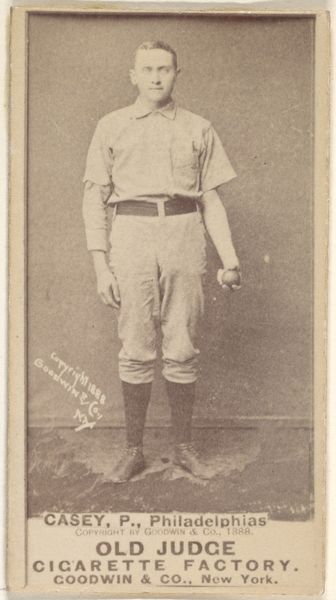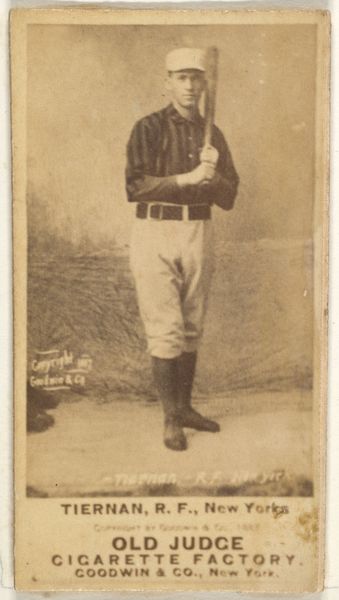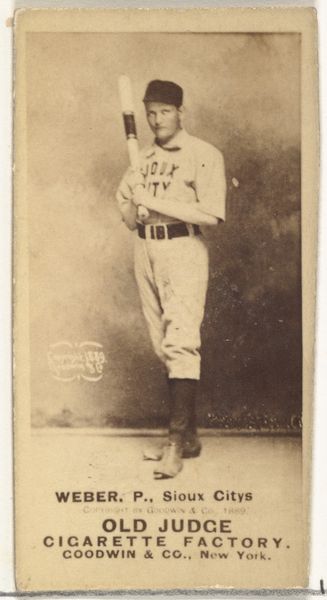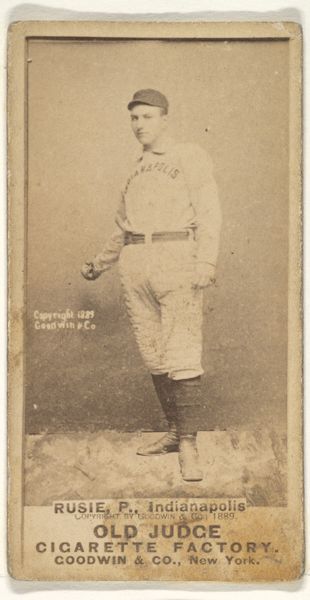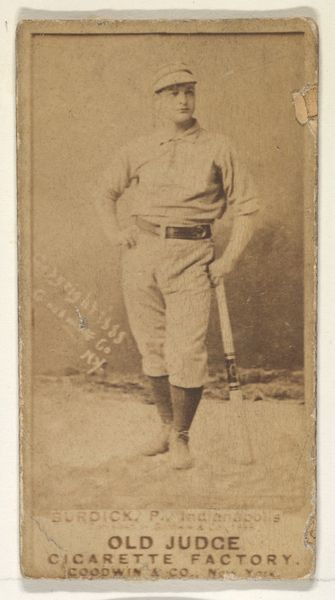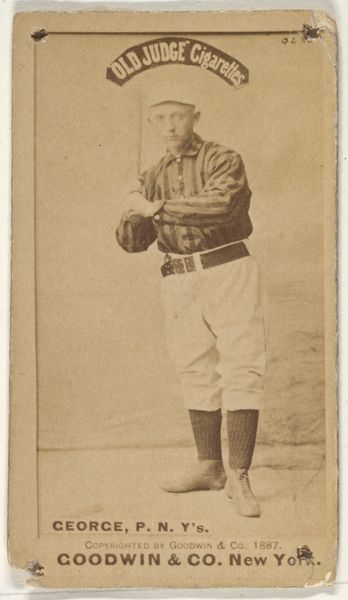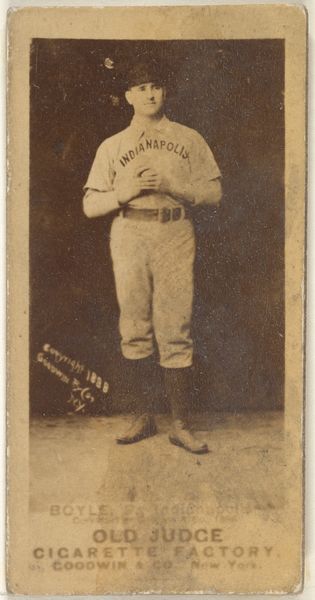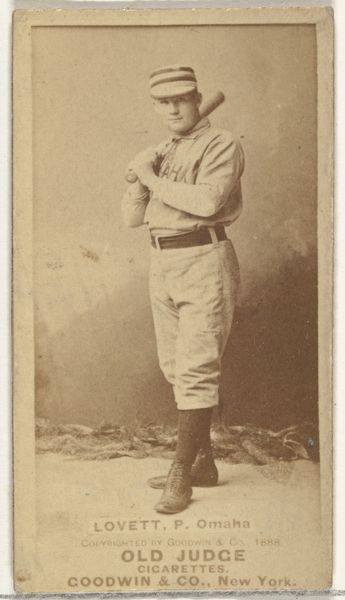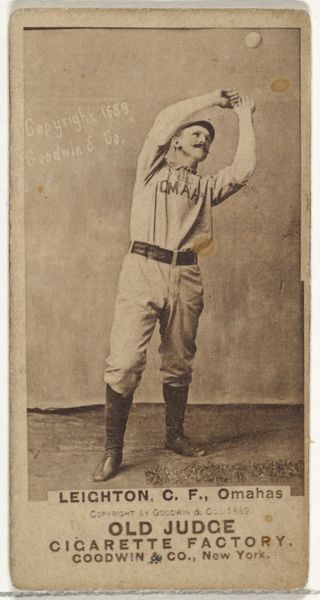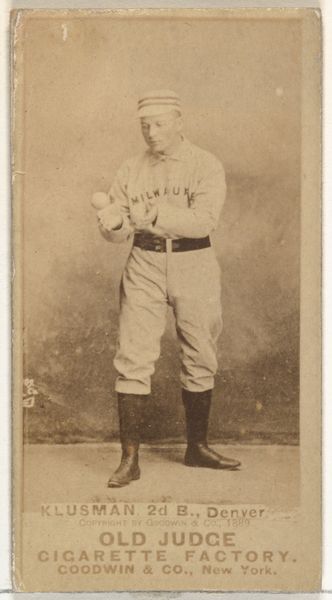
Jerry Denny, 3rd Base, Indianapolis, from the Old Judge series (N172) for Old Judge Cigarettes 1888
0:00
0:00
Dimensions: sheet: 2 11/16 x 1 3/8 in. (6.9 x 3.5 cm)
Copyright: Public Domain
Curator: This albumen print, a baseball card featuring Jerry Denny, a third baseman for Indianapolis, comes from the "Old Judge" series (N172) and was produced by Goodwin & Company around 1888. The Metropolitan Museum of Art is fortunate enough to house this tangible fragment of baseball history. What are your first thoughts? Editor: I’m struck by the photograph’s rather subdued palette, almost monochrome. It is a tonal study with subtle gradations of sepia creating depth. Denny is centered and the sepia hues create a somewhat nostalgic atmosphere, fitting for its time. The tonal gradation reminds me of Pictorialism with its emphasis on manipulated light. Curator: Precisely! This card speaks volumes about the cultural landscape of late 19th-century America, an era rapidly embracing baseball as its national pastime. Tobacco companies shrewdly capitalized on the sport's popularity, distributing these cards to boost cigarette sales, effectively merging leisure and commerce. The design and distribution themselves tell the tale. Editor: Let’s not neglect the careful balance inherent in its composition, too. Look at how the rectangle, imposed as a constraint, actually enhances the athletic form. The photographer or the artist here – if you consider it as "art", strictly speaking – is manipulating space very deliberately. We can easily draw connections to contemporary compositional conventions used by Edgar Degas during that period in the placement of subjects and use of implied motion. Curator: Indeed. While mass-produced, it's still an early example of celebrity endorsement influencing consumer culture, a trend that exploded in the following century. Furthermore, the existence of this card highlights the growing celebrity of athletes and their penetration into everyday life through media. We cannot forget, in the same historical period of Jim Crow era legislation that denied access to professional sports to minority baseball athletes. Editor: Considering all this, the limited tonal contrast makes Denny seem oddly removed and untouchable, like a heroic sculpture almost. His neutral stance and the framing give him presence, but keep a cool detachment in what we now call photographic ephemera. It is fascinating. Curator: Quite so. Goodwin and Company certainly found a winning formula with these cards. Studying pieces like these opens up an intriguing lens through which to examine American culture. Editor: I concur. A potent reminder that an object can hold and relay rich semiotic meaning if you allow it.
Comments
No comments
Be the first to comment and join the conversation on the ultimate creative platform.
